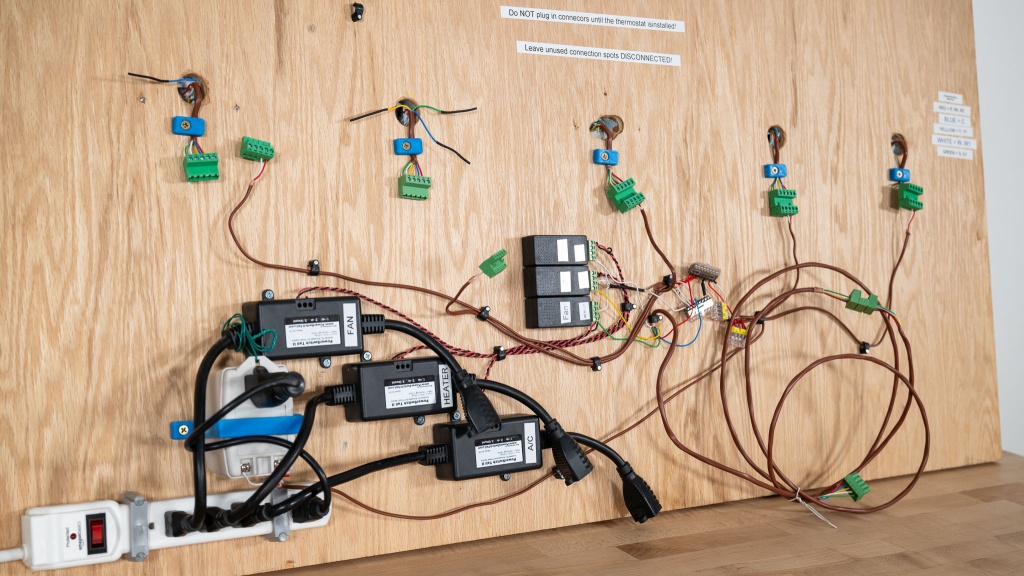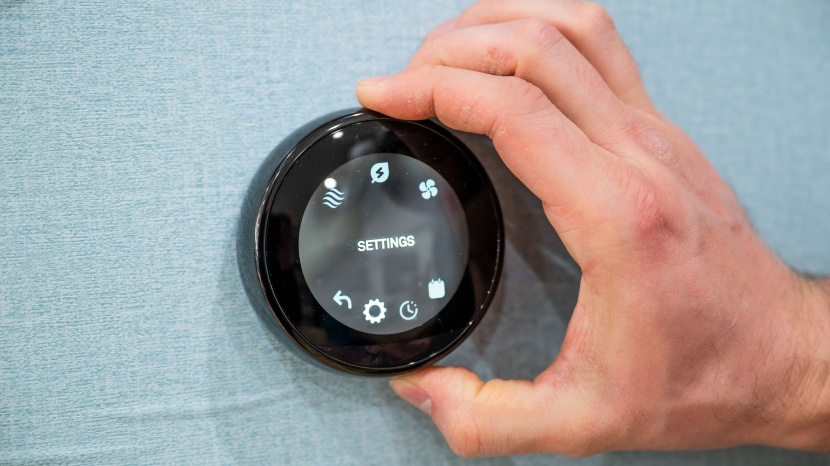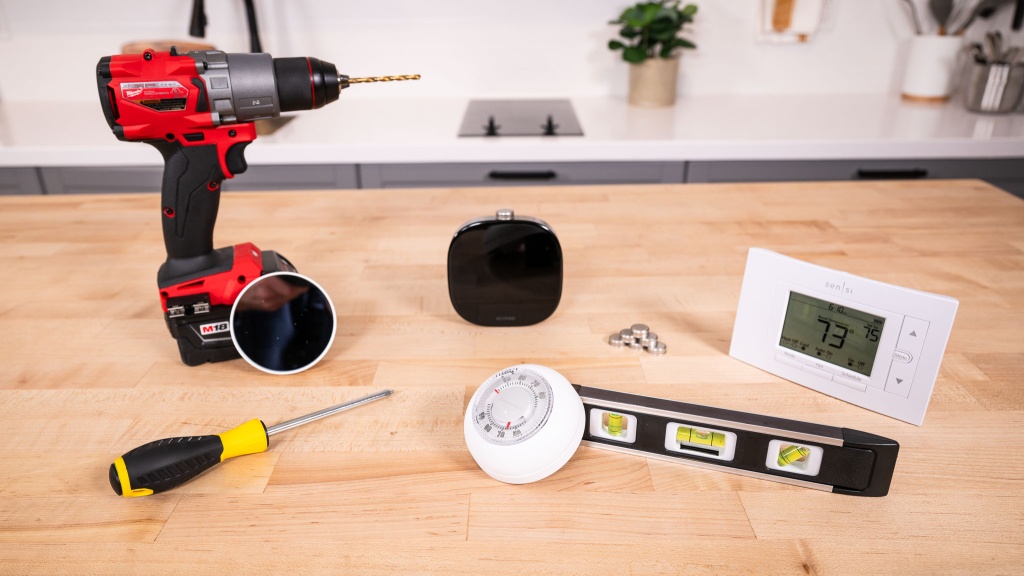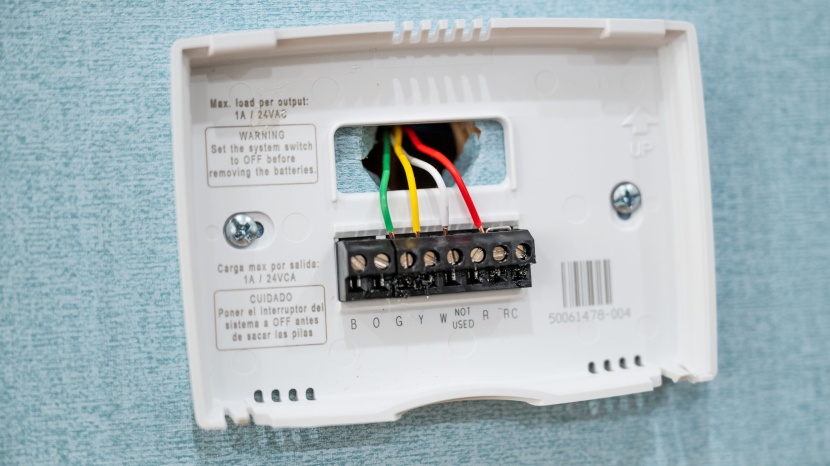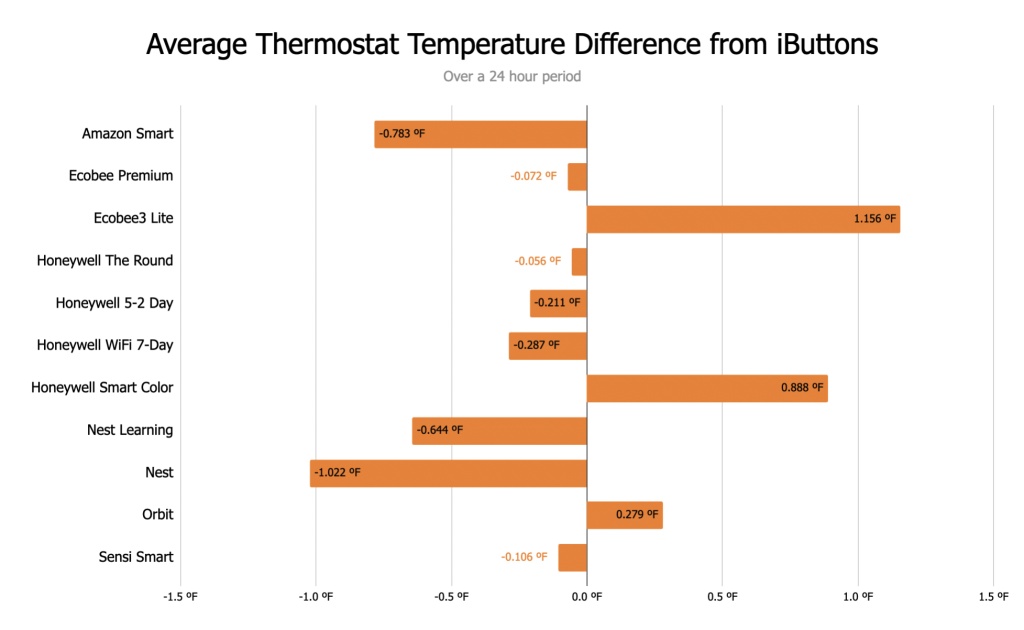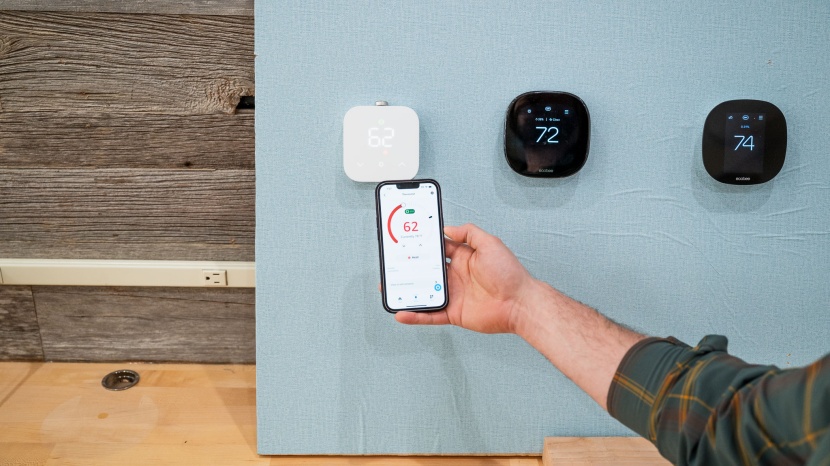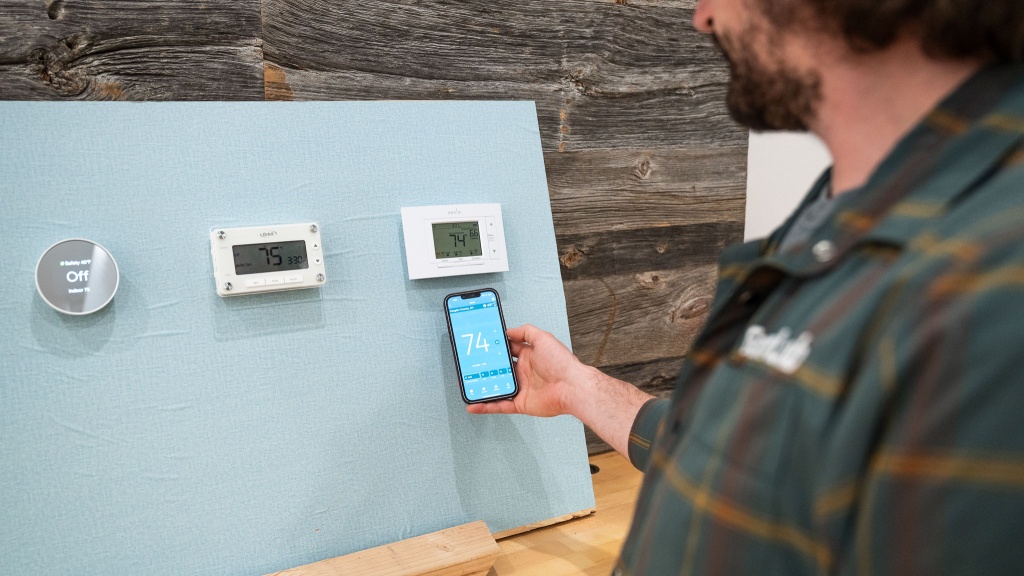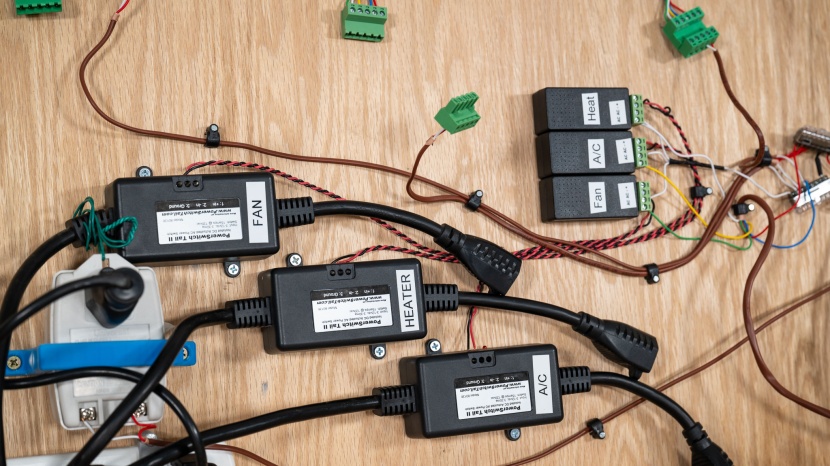We meticulously tested every facet of these thermostats, even constructing a custom-made testing board for direct side-by-side comparisons of their functions as they turned on and off. This board translated the thermostats' signals into control commands that would turn on lights when each thermostat turned on Heat, Cool, and Fan on actual portable fans, heaters, and ACs.
This enabled us to promptly repeat the test on each thermostat, ultimately leading to a more effective and direct comparison between the models with plenty of measurements and notes.
Ease of Use
When evaluating thermostats for their ease of use, we considered everything that makes or breaks a pleasant user interaction. First, high scorers needed to make it easy and intuitive to adjust the temperature and switch between different modes at the thermostat without requiring a tutorial every time or tons of toggling through menus. We appreciate responsive touchscreen controls with instinctive inputs and gestures, or well-placed dedicated physical buttons and dials for this. When it comes to smart thermostats, we also like to see polished user interfaces and advanced functions through a dedicated app.
Next up, we awarded points for advanced fan controls and some form of temperature holding. Some thermostats provided no control over the fan at all, while others allowed you to decide whether and when to run it and still offered the option to leave it on autopilot. Hold status is another function that we really appreciated when it was done right. The ability to bypass all scheduling and programming to hold a set temperature until you tell the thermostat to do otherwise comes in handy, especially when you're going to be away for a couple of days on vacation. Some thermostats have complicated ways of achieving this, while others are so simple that they just hold the temperature by default.
Lastly, we awarded points for thermostats that are easy to read and display accurate temperatures. Some of the best thermostats had highly legible screens that activate or brighten as you approach them and are highly precise with the temperature displayed on the thermostat versus the ambient temperature measurement that we took with nearby lab-grade temperature loggers.
DIY Installation
We rated the installation for every thermostat based on its technical complexity and how well the process was guided through supplied text and video. We highly preferred units that featured push-in wire terminals instead of the screw-in types because they were easier and didn't require extra tools. For many of the smart thermostats, extra points were awarded if we were guided through a dedicated app.
Some other nice-to-haves were online compatibility checkers, easy WiFi setup, and easy-to-create online accounts for smart thermostats. We also found it helpful when instructions would remind us to snap a picture of the wiring of the thermostat we were replacing and tell us what tools to bring for the job. We appreciated kits that included a built-in level for a precise installation as well.
Scheduling
We scored this metric based on the availability, intuitiveness, and robustness of scheduling features for every thermostat. The more flexible the scheduling capabilities, the higher the score awarded. For instance, we looked into the number of schedulable days allowed, the ability to dial in with targeted time or temperature increments, and the number and complexity of events permitted by the operating system.
Smart Capabilities
Many of the thermostats we tested have some smart capabilities, but a few outliers kept it barebones and old school. Those did not score any points at all in this category, but we awarded points in a variety of areas for the others.
The highest scorers had an easy-to-navigate mobile app and geofencing, which allows the thermostat to track your presence in or proximity to your home, triggering heating and cooling events accordingly. We also assessed and awarded points for maintenance reminders, schedule learning features, and the number of smart home ecosystems the thermostat is compatible with (Amazon Alexa, Apple HomeKit, Google Assistant, Samsung SmartThings, etc.).
Energy Saving
The final assessment was made regarding eco-friendly modes and features, including everything down to the sustainability of the thermostat's packaging. Thermostats with eco-modes and indicators on the display scored better than those without them, as do systems with reporting features such as emails or in-app data that can lend insight into energy usage and help us develop habits to improve efficiency and best practices.
Conclusion
We trust that this guide has shed light on our process of evaluating the wide array of thermostats available on the market to identify the most promising options and the criteria behind selecting our award winners. For a deeper look at the side-by-side performance of these products, take a peek at our thermostat review, or check out our Buying Advice article for a detailed discussion of which type of thermostat is best for your needs and home.

